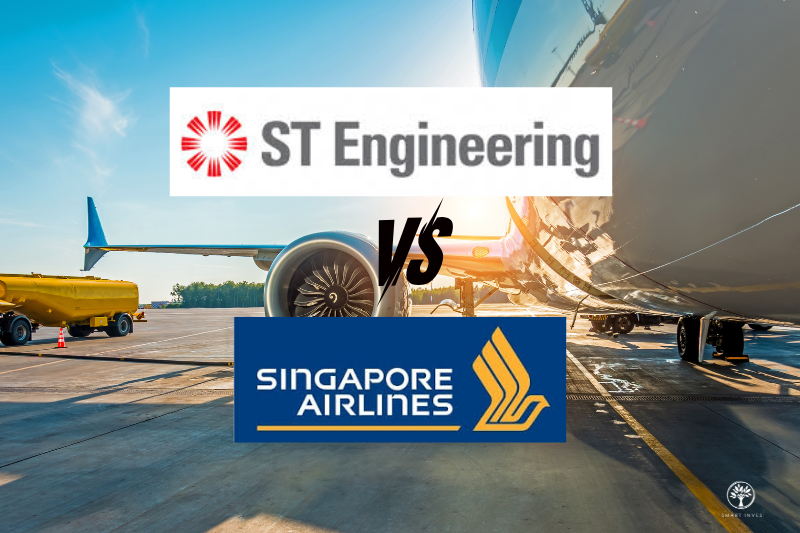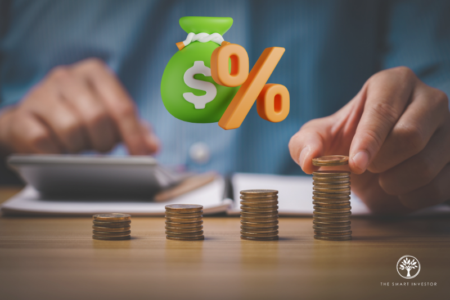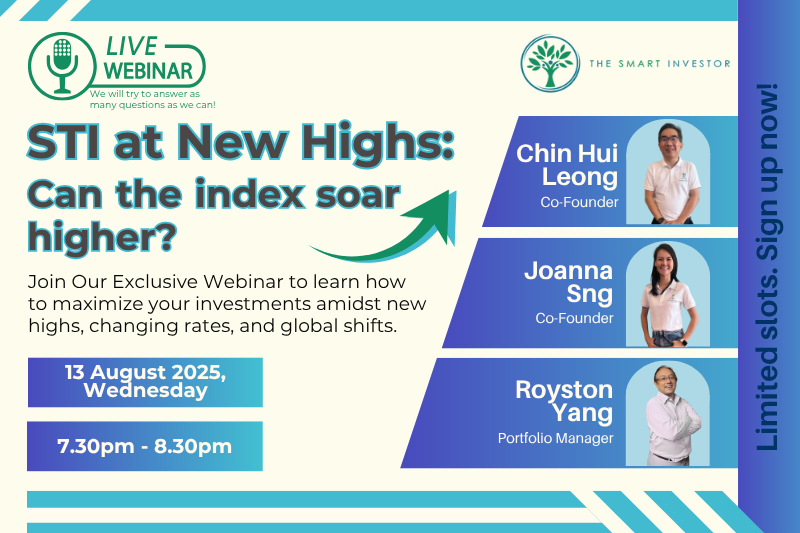ST Engineering Ltd (SGX: S63) and Singapore Airlines (SGX: C6L) are familiar names on the SGX.
Both represent a play on the aerospace industry.
Which stock is a more compelling buy right now?
ST Engineering — The Steady Compounder
For 2025’s first half (1H2025), ST Engineering Ltd, or STE, recorded a 7% year-on-year (YoY) increase in revenue to S$5.9 billion.
Profits grew even faster, with earnings before interest and tax (EBIT) coming in at S$602 million, rising 15% YoY.
Commercial Aerospace, a key segment for STE, posted revenue of S$2.35 billion and EBIT of S$233 million, up 5% and 18% YoY, respectively.
Representing 40% of the company’s total revenue and close to 39% of its EBIT, this segment benefits from stable maintenance, repair, and operating (MRO) demand.
Next, the Defence & Public Security segment contributed S$2.65 billion in revenue, up 12% YoY.
Segment EBIT increased 13% YoY to S$367 million. DPS represents 45% of STE’s revenue and 61% of its EBIT.
Urban Solutions and Satcom (USS) remains a stable operating segment for STE.
While revenue was flat at S$921 million, the segment reported a 32% YoY increase in EBIT of S$12 million, contributing 15.6% and 2% of the company’s revenue and EBIT.
Order book stands at S$31.2 billion as at 30 June 2025.
Recently, the company announced two rail contract wins for four MRT stations.
STE also inked new partnerships with Oracle (NASDAQ: ORCL) and multiple European defence companies.
STE boasts a solid dividend track record: between 2017 and 2024, STE has paid a cumulative dividend of S$1.24 per share.
For 1H2025, STE declared an interim dividend of S$0.08 per share.
This dividend is well supported by the company’s operating cash flow of S$761 million.
The stock has a decent dividend payout of around 69%.
The main risks for STE are that it is dependent on government defence budgets, which can fluctuate.
Delays or overruns in costs for project executions could also pressure earnings.
Singapore Airlines — The Cyclical Rebounder
Singapore Airlines, or SIA, has benefited largely from the travel boom.
The airline saw record passenger numbers in the first quarter ended 30 June 2025 (Q1FY25/26).
In August 2025, the group’s passenger load factor (PLF) was 88.0%.
While the metric is up from 85.7% in the prior year, it has declined from June’s 88.7% and July’s 88.5%.
SIA’s cargo load factor (CLF) was 55.2% for August 2025, a decrease from June’s 56.4% and July’s 57.1%.
Increased competition caused passenger yields to slip 2.9% YoY to S$0.10 / passenger-km.
Coupled with higher non-fuel costs, this has caused the group’s operating profit to slip 14% YoY to S$404.5 million.
In the event of a downturn, investors should be mindful of further earnings decline.
SIA has a cash-rich balance sheet of S$9.8 billion (including fixed deposits).
Since Q1FY22/23 (post-pandemic), the group has been diligently reducing its debt load, with total debt declining 26.8% from S$15.7 billion back then to S$11.5 billion at the end of its latest quarter.
The group has resumed paying a dividend since Q1FY22/23.
SIA recently declared a final dividend of S$0.30 per share, representing a trailing yield of 6.0% based on its current share price of S$6.64.
This dividend could be sustainable given the airline’s outsized cash balance, and the copious amount of operating cash flow (S$4.7 billion for FY24/25).
SIA’s main risks include higher oil prices and stronger competition, which could erode margins and pressure earnings.
SIA also relies on global travel demand.
ST Engineering vs Singapore Airlines Comparison
STE recorded stable revenue and earnings growth.
In contrast, SIA posted flat revenue and saw its operating profit slip.
The order book for ST Engineering is robust, standing at S$31.2 billion as of June 2025.
Passenger bookings remain steady for SIA, with passengers carried increasing 6.9% YoY to 10.3 million for Q1FY25/26.
However, intense competition caused its passenger yield to decline 2.9% YoY to S$0.10/passenger-km.
ST Engineering has a trailing dividend yield of around 2.0% based on its current share price of S$8.55.
The company also has a very strong and stable dividend-paying history.
SIA has a higher dividend yield of 6%.
However, its payout stability has been volatile, with larger payments declared during upturns, and it has periods where it did not declare a dividend (pandemic).
Both companies are sensitive to the economic cycle: higher costs could pressure both companies’ margins.
Sector Prospects
Global travel demand is robust, with passenger demand growing 4.6% YoY in August 2025, a trend that is expected to persist.
This is a boon for STE’s CA segment and for SIA.
Global defence spending is expected to grow steadily to nearly S$2.6 trillion in 2029, on the back of increased geopolitical tensions.
The global smart cities market is expected to reach almost S$3.8 trillion by 2030.
ST Engineering’s DPS and USS segments are well-poised to capitalise on such growth tailwinds.
An economic slowdown, increased geopolitical instability, and higher prices could derail these tailwinds.
Get Smart: Which Stock Wins?
The choice for investors comes down to what kind of exposure they would like.
If you prefer a stable long-term growth compounder with a strong record of paying dividends, ST Engineering may be your cup of tea.
However, if you would like a higher-beta, more cyclical option with upside tied to the travel boom, SIA will be a candidate to consider.
The world’s gotten unpredictable, but some Singapore companies have quietly kept thriving. You’ve probably seen them in your daily life. And yes, they’ve kept paying dividends through it all. Meet 5 resilient stocks built to navigate global storms. Get the free report here and see how they’ve done it.
Follow us on Facebook, Instagram and Telegram for the latest investing news and analyses!
Disclosure: Wesley does not own shares in any of the companies mentioned.





